Hank Seemann, Humboldt County’s deputy director of environmental services, provides an overview of the Redwood Creek Estuary Restoration Project at Orick Community Hall. | Photos: Andrew Goff
###
###
Two dozen residents gathered Wednesday at the Orick Community Hall to learn more about the Redwood Creek Estuary Restoration Project, a massive undertaking to reroute the creek and restore critical fish habitat — and, perhaps, provide some measure of enhanced flood protection for the vulnerable town.
“It’s been a big, long push to get here,” said Gregory Hufford, a civil engineer and representative of the families that own property on the north side of Redwood Creek. “It all started with a conversation with a person who works in restoration at California Trout … who said, ‘This is bad — it’s not going to get any better; it’s just going to get worse.’ And from my perspective, nothing could be worse than it is right now.”
Over the years, Redwood Creek has become inundated with sediment buildup and overgrown vegetation, significantly reducing flood capacity within the earthen levee system that flanks the lower 3.4 miles of the creek. The multi-million dollar restoration project aims to reverse decades of ecological degradation and revitalize critical habitat for threatened and endangered salmonid species by redirecting the main channel of Redwood Creek back to its original alignment.
When the Redwood Creek Flood Control Project was constructed in the mid-1960s, the U.S. Army Corps of Engineers sought to simplify the configuration of the creek by redirecting the main channel through Middle Slough, straight out to the Pacific Ocean, as seen below. Doing so cut off overflow channels (Sand Cache Creek and Strawberry Creek) and drastically reduced the size and complexity of the estuary.
An aerial view of the Redwood Creek estuary in 1941. | Photo: County of Humboldt
An aerial view taken in 2012. | Photo: County of Humboldt
“Those overflow channels were important because, when we got a big flood on Redwood Creek, water would spill out and flush out Sand Cache Creek,” Conor Shea, a civil engineer with the U.S. Fish & Wildlife Service, explained at Wednesday’s meeting. “We no longer have that happening … so there’s nothing coming in to push the sand out of Sand Cache Creek. That’s why we see a massive amount of wood and debris out there. [It] has effectively lost all function.”
The configuration of the levee system has also caused ocean sand to fill the Redwood Creek Estuary, Shea said, limiting its ability to push out accumulated sediment.
“In the original configuration, the estuary was able to maintain its shape and flush that sand out to keep it moving,” he continued. “Now, because the channel [goes] straight out and makes a big opening, during the winter, waves can bring all that sand that’s moved along the shoreline directly into the estuary, deposit it and cause this blockage.”
Conor Shea.
On top of that, the accumulation of invasive vegetation has limited flows in Redwood Creek and its tributaries, which provide critical habitat for several salmonid species, including federally listed coho salmon.
“Historically, the estuary played a really important role in allowing those fish to grow, fatten up, and attain the condition that would allow their survival in the ocean into adulthood and have them return as spawners that increase the population,” said Leslie Wolff, a local hydrologist with NOAA Fisheries. “That key life history phase that the estuary provides … we can’t recreate that system through a mitigation anywhere else.”
At the end of last year, after nearly 10 years of legwork, the Army Corps of Engineers and the Redwood Creek Estuary Collaborative — a group comprised of private land owners and representatives of California Trout, the California Department of Fish and Wildlife, the County of Humboldt, the National Parks Service, NOAA Fisheries, the North Coast Regional Land Trust, U.S. Fish & Wildlife Service and the Yurok Tribe — launched a feasibility study to assess the magnitude of a restoration project and potential configurations for a new estuary.
“This is a long process, but it’s set up to try to support big projects like this and make sure they’re effective. That means they have to go slowly,” said Hank Seemann, the county’s deputy director of environmental services. “This feasibility study is looking at options and really trying to identify where the problems are, potential measures to address them, and, ultimately, to select a preferred project.”
The collaborative will have to consider a wide range of factors in its analysis, including environmental impacts, budgetary constraints and real estate boundaries. Not only that, but there are dozens — perhaps hundreds — of potential design features to consider. Should portions of the levee be removed? Should a setback levee be constructed? Should South Slough be excavated, or should the creek be rerouted through South Slough?
“Now, we’re at this part of the process where we’re trying to collect ideas, and this is where your community input is really important,” said Savannah Fahning, an environmental manager with the Army Corps of Engineers’ San Francisco office. “We start with a bunch of ideas and narrow it down to just a few. We analyze those very thoroughly and send that analysis to the public for review and comments.”
Savannah Fahning describes the potential configurations of the new estuary.
Fahning emphasized that the restoration project cannot “lessen the original intent” of the flood control project or increase flood risk for surrounding communities.
Once the feasibility analysis is complete, likely in the next two years, the design plans will be finalized, and the Army Corps of Engineers and the county will apply for the permits needed to move forward with construction. That process will take another couple of years. If everything goes according to plan, construction will begin in the summer of 2029.
The project is expected to cost between $15 million and $20 million, Seemann, adding that restoration “may need to be broken up in phases.”
During the Q&A portion of the meeting, several community members asked whether the restoration project would alleviate flood risk for folks living upstream, with a few folks noting that the levee came within just a few feet of overflowing during a big storm in January of 2024.
“It’s the shape of the flood control channel that controls the height of the water as it passes through the the levee system. The estuary is so far downstream that it doesn’t really impact how water moves through that flood control channel,” Shea said. “We could change the configuration of the estuary and remove [a portion] of those levees down there, but it doesn’t change what happens upstream.”
However, if there’s more space for water to flow in the lower portion of Redwood Creek, including secondary channels within the enlarged estuary, there could be some upstream benefits, Seemann told the Outpost in a follow-up interview.
“In fact, from the county’s perspective, achieving enlarged capacity at the lower end is a desired outcome if it can be achieved as part of the estuary restoration project, and we will be trying to see if it can be incorporated,” he said. “We’ll know more after we get more into the design process and can evaluate how the flows will respond. My guess is that the upstream benefit would be fairly limited, possibly extending upstream as far as the Shoreline Market, but I would not expect the enlarged capacity to extend further upstream into town due to the distance.”
A few other meeting attendees, including one gentleman with a crushed red Solo cup in hand, attributed flow issues to overgrown vegetation in Redwood Creek and asked why county staff wouldn’t let locals come in and cut the trees back themselves like they used to. Seemann said the county is now required to apply for a permit for tree removal along Redwood Creek because it provides habitat for federally listed salmonid species.
“The county maintains three levee systems … and our highest priority is Orick,” Seemann continued. “We spend the biggest portion of our maintenance funding up here. And we really think the best value for our limited maintenance money is mowing the sides of the levees. … We’re going to continue to work with the California Department of Fish and Wildlife to see what we can do [about] tree removal in the channel, but it’s all regulated by state and federal law so there has to be a balance between leaving some trees and doing some removal.”
As the meeting wrapped up, Fifth District Supervisor Steve Madrone emphasized the importance of creating a project that enhances fish habitat while offering protection for the surrounding community.
“We have heard — I have heard as your supervisor over and over again — a lot of the same concerns that are being expressed here today about … the capacity of these existing levees,” Madrone said, turning to the Army Corps of Engineers representative. “Savannah, I just want to make sure that you are hearing the community in that there’s this great project happening in the estuary, but there’s also this whole levee system. … There are very serious concerns about the levees and their capacity to protect the town during a serious flood.”
Madrone concluded the meeting by encouraging residents to stay engaged in the project. “It’s not all going to happen tonight, but we heard you, and we appreciate your comments,” he said.
Surprisingly, Ron Barlow, chair of the Orick Community Services District, didn’t speak up at the meeting. If you know Barlow, you know he’s a passionate advocate for his little community. For the last 30 years, he’s written countless letters to sound the alarm over maintenance issues with the Redwood Creek levee system. I interviewed him for a story on this very topic last year, which you can find here.
Asked how he felt about Wednesday’s meeting, Barlow said he thought it went “okay” and spoke highly of the presenters. “I always think Hank Seemann does a good job and Steve Madrone, I think there’s gonna be quite a loss when he isn’t our supervisor anymore,” he said. “I’m really happy with the job he does.”
Barlow spoke in favor of estuary restoration, adding that the configuration of the levee system needs to change to ensure it functions properly. However, his primary concern is flood protection.
“I was told that county would not sign on with this if it decreased flood protection, and that was addressed a little bit at the meeting,” he said. “Our biggest problem is all these trees in the channel. … I’m hoping Hank and Steve can help us get through these regulatory issues because we’ll jump in and do the work.”
###
Ron Barlow (center) looks on during Wednesday’s meeting.
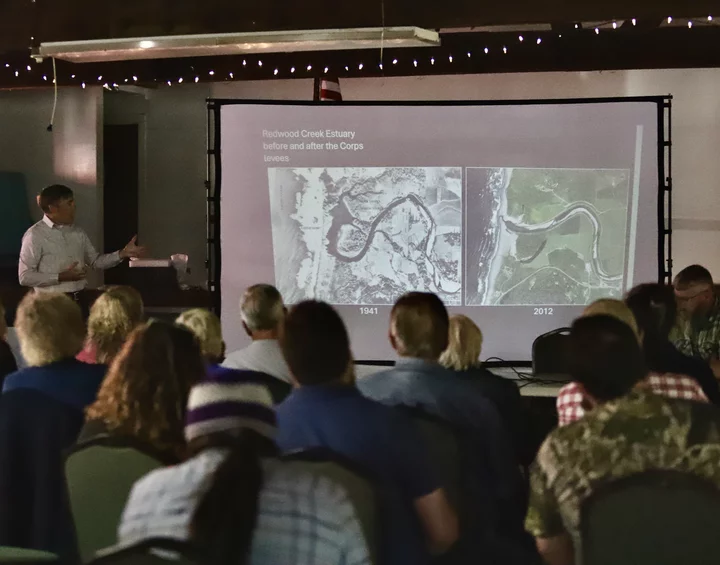
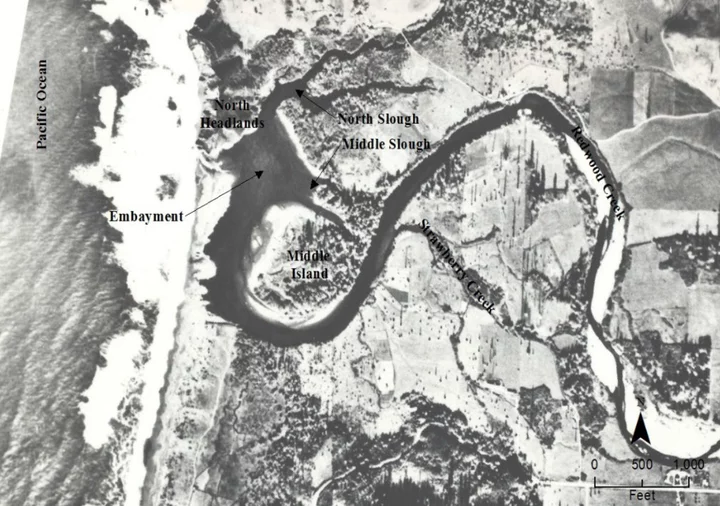
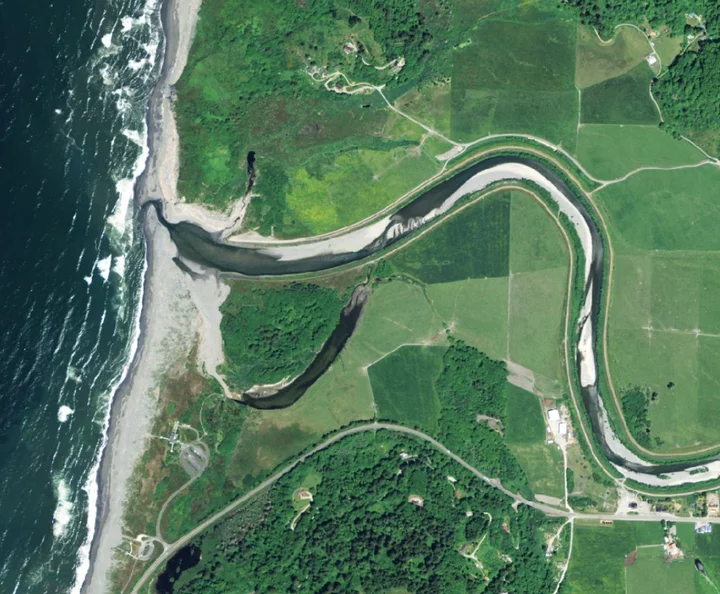
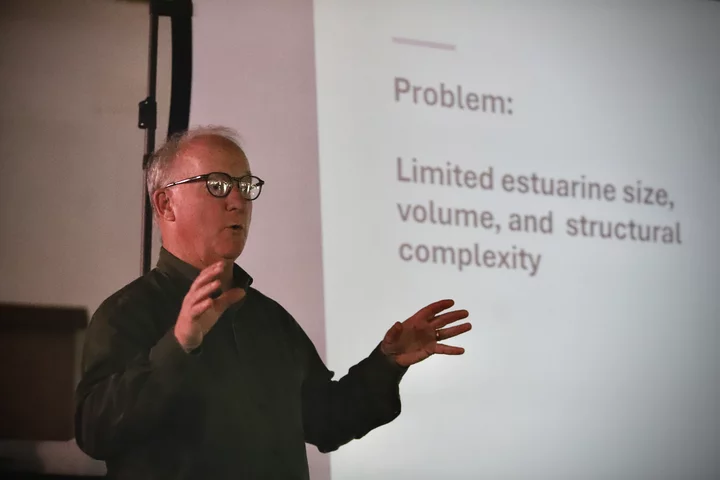
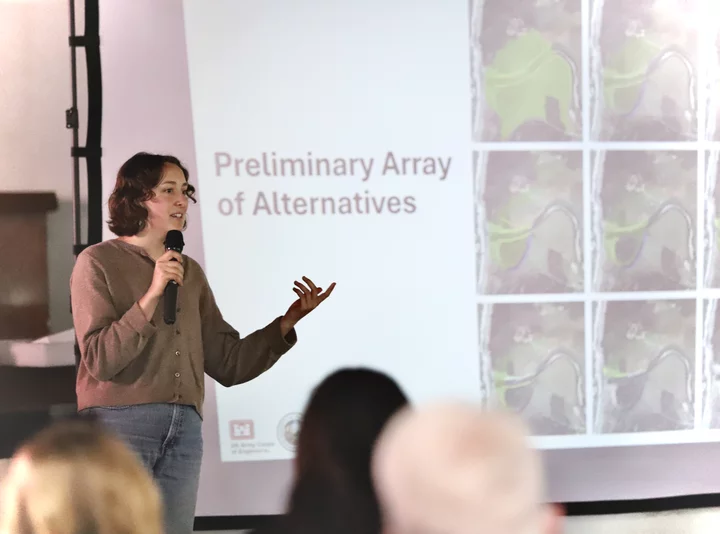
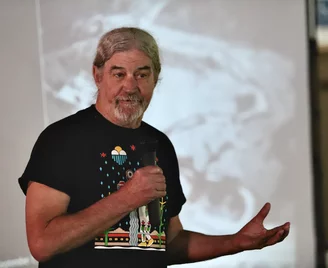

CLICK TO MANAGE